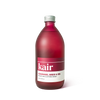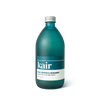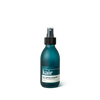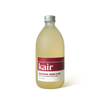Our top tips for stain removal
Stains are a pain. Whether it’s ink over your smartest white shirt, or a glass of wine down your favourite evening dress, it’s hard to fight the rising panic that sets in the moment you spill something on an item of clothing you adore. But treating stains on your garments is much easier than you think, as long as you know what you’re doing. And there’s rarely any real permanent damage, so a stain need not spell the end of your favourite pieces. With our 101 stain removal guide, you can banish even the most stubborn of stains. Before proceeding, though, always check the fabric content and specific stain you’re treating, to ensure you use the appropriate technique, solvent and water temperature.
Fabrics
Image source: ThreadCurve
Cotton: Cotton can tolerate hot water, cold water and repeated washing.
Wool: Always use cold water (> 30ºC), and spread out flat to dry. Avoid over-washing.
Silk: Always use cold water (> 30ºC), and hang to dry. Avoid over-washing.
Synthetics: Take Kair with stains on synthetics (especially paint), and with the solvent you use (as some, like ammonia or acetone, can melt or degrade the fabric).
Solvents

Image source: NBC News
Water: Always your first line of defence - gentle on all fabrics, as long as you choose the appropriate temperature. Rinse, blot, dab, repeat (take Kair not to scrub vigorously).
Detergent: Use one of our plant-based detergents to gently spot-treat the affected area, before laundering as normal using the recommended cycle and temperature for the fabric. We suggest avoiding enzyme-based stain removers, as these can be harsh on natural fabrics (especially delicates, like wool and silk), as well as on sensitive skin.
Vinegar: A natural and effective stain remover. Mix a solution of one part white vinegar to one part water. Use sparingly on wool and synthetics, and always spot-test first.
Ammonia: A common and useful household cleaning chemical. Mix a solution of one part ammonia to one part water. Never mix with bleach (and avoid using bleach as a stain remover in general: it will quite literally blitz the life out of your favourite pieces, and should only be used as a last-resort for removing stubborn stains on whites).
Ethanol (a.k.a. rubbing alcohol): Effective for removing inks, dyes and chemical- or oil-based stains. Check out our guide on removing ink stains for the full method.
Dish soap: A relatively mild and versatile solvent, which works particularly well on grease and condiments. Make a stain removal solution by diluting 1 tbsp with 300 ml of water.
Mineral spirits and acetone: These are necessary to remove oil-based paint stains, but can be harsh on synthetics. Mineral spirits are the gentler of the two, but still use sparingly.
With the fabric content and solvent in mind, you’re ready to tackle the most common types of stain. After treating the stain, launder your garment as normal and air dry.
Removal methods for common types of stain
Blood: Run under cold water (not hot, as this will set the stain). If this isn’t enough, dab either lemon juice or hydrogen peroxide on lighter-coloured items, and salt water or contact lens solution on darker-coloured ones, then rinse again with cold water.
Sweat: Remove all traces of ugly yellow armpit stains by pre-soaking your garment in distilled white vinegar or lemon juice. If that’s not enough, dab with hydrogen peroxide, then rinse with the hottest water the fabric will allow. Consider also making your own sweat and odour-removing paste with baking soda: simply combine 4 tbsp of baking soda with a 1/4 cup of water, rub the paste onto the stain, then leave it to sit for 1-2 hours. Brush the pasta off your clothes into a sink before laundering and then, if possible, drying outside.

Image source: First for Women
Grass: Run under cold water, the pre-treat with detergent. If necessary, soak in a solution of vinegar for a few hours or overnight as well, then rinse again with cold water.
Grease: Soak up grease or oil with a basic powder, such as talcum powder/baby powder, cornstarch or even chalk, before running under cold water. If that’s not enough, blot the stain with a clean cloth and some dish soap solution, then rinse with hot water.
Ink: We have a step-by-step guide on how to remove ink from clothes. The solvent depends on the type of ink: water-based, oil-based or alcohol-based. For water-based ink stains, use milk or water; for oil-based or alcohol-based, use ethanol/rubbing alcohol.
Wax: We have a step-by-step guide on how to remove wax from clothes. The trick is to allow the wax to cool and harden first (the exception to working on a stain immediately!). Then scrape it off with a blunt knife, before using an iron to remelt the wax and transfer it onto another cloth. Spot-treat any lingering colour with detergent and launder as normal.
Rust: Sprinkle with lemon juice and salt, then air dry in the sun (if possible - for lighter-coloured items only), then rinse with cold water and launder as normal.

Image source: Alaina Digiacomo
Makeup: Immediately remove excess product with a blunt knife (this is more important with liquid foundation, mascara and lipstick than something like powder), then blot with a damp paper towel and dab on hydrogen peroxide. Use a toothbrush to work the hydrogen peroxide in a circular motion, then spot-treat with detergent and rinse with cold water.
Coffee: Immediately remove excess liquid with a damp cloth, then run under cold water. Soak in a solution of vinegar for a few hours or overnight, then spot-treat with detergent.
Wine: We have a step-by-step guide on how to remove red wine stains from clothes. There are several possible remedies (none of them being white wine, contrary to popular belief!), but the most effective is to sprinkle the affected area with salt as soon as possible, before running under the hottest water possible for the fabric (boiling water is preferable).

Image source: Food Hacks
Juice: Run under cold water, then dab on a dish soap solution with a cloth. If that’s not enough, try applying a diluted ammonia solution as well, before rinsing and laundering.
Chocolate: Scrape off excess chocolate with a blunt knife, then dab on a dish soap or vinegar solution with a cloth. Spot-treat with detergent and run under hot water to finish.
Though the specific technique depends on the fabric and type of stain, there are some general tricks which will make your stain-removing more effective and stress-free.
Top tips for effective stain removal
Tip #1: Work on your stains as soon as possible, otherwise it will sink and settle into the fabric’s fibres, and will eventually set and become more difficult to remove.
Tip #2: We always recommend avoiding tumble dryers where possible, but it’s even more important to avoid them when treating a stain - the heat will cause the stain to set.
Tip #3: When applying anything to your fabrics, whether dry or liquid, always test it on an inconspicuous area first, and only proceed if it leaves no visible mark or lasting damage. You should also test whether a coloured item is colourfast, by blotting it with a damp, white cloth: if colour transfers onto the cloth, then the item isn’t colourfast and could bleed.
Tip #4: Scrubbing will cause most stains to spread outward even more, and press them even deeper into the fabric. So be sure to blot rather than scrub your stains.
Tip #5: To remove excess liquid from fabrics which can’t be laundered as easily (like upholstery and carpets), the suction function on a wet/dry vacuum can come in handy.
So next time one of your favourite garments suffers an untimely spillage, you’ll know exactly what to do, no matter the fabric or type of stain. Just remember - act fast!





















